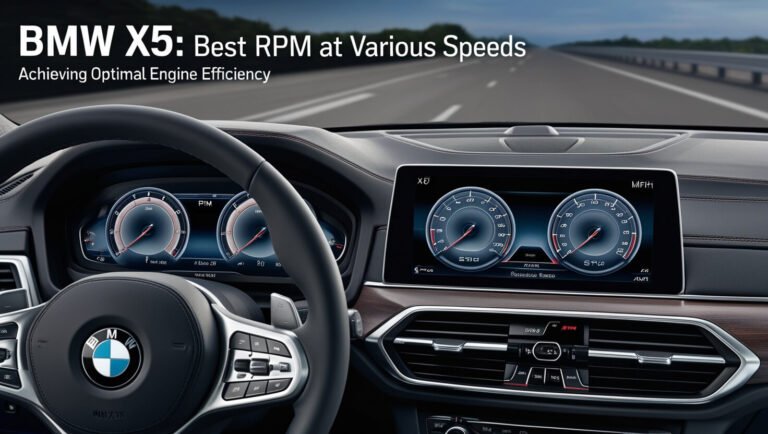
BMW’s Adaptive M Suspension is an advanced system that automatically adjusts the car’s suspension settings to provide optimal performance and comfort in various driving conditions. This technology uses electronic dampers and sensors to continuously monitor road conditions and driving style, making real-time adjustments to deliver a smooth ride and responsive handling.
In this post, we’ll explore how Adaptive M Suspension works, its benefits for daily driving and performance, and how it compares to other BMW suspension systems. We’ll also look at its implementation across different BMW models and discuss maintenance considerations.
The Core of Adaptive M Suspension Technology
Electronic Damper Control: How It Works
At the heart of BMW’s Adaptive M Suspension is the Electronic Damper Control (EDC) system. This technology uses electromagnetic valves in each shock absorber to adjust damping forces on the fly.
When the valves open, more oil flows between the damper chambers, reducing damping force and creating a softer ride. When they close, oil flow is restricted, increasing damping force for a firmer, more responsive feel.
This system allows the suspension to react instantly to changes in road conditions or driving style, providing the ideal balance of comfort and performance at any given moment.
Sensor Systems and Real-Time Adjustments
To make these split-second decisions, the Adaptive M Suspension relies on a network of sensors throughout the vehicle. These sensors monitor:
- Wheel movement
- Body movement
- Steering angle
- Vehicle speed
- Acceleration and braking forces
The system processes this data in milliseconds, constantly adjusting each damper individually to optimize ride quality and handling.
Driving Modes and Suspension Settings
BMW’s Adaptive M Suspension offers different driving modes to suit various preferences and situations. Let’s take a closer look at each mode:
Comfort Mode: Smoothing Out the Ride
In Comfort mode, the system prioritizes a plush, relaxed ride. The dampers are set to their softest setting, allowing the suspension to absorb bumps and road imperfections more effectively. This mode is ideal for long highway drives or when you just want to cruise comfortably around town.
Sport Mode: Enhancing Handling and Responsiveness
Switching to Sport mode firms up the suspension for improved handling and reduced body roll. The dampers become stiffer, providing more direct road feedback and sharper cornering response. This setting is perfect for winding roads or when you want a more engaging driving experience.
Sport+ Mode: Track-Ready Performance
For those who crave maximum performance, Sport+ mode takes things up another notch. The suspension becomes even firmer, minimizing body movement and maximizing tire contact with the road. This setting is designed for track use or for drivers who want the most aggressive handling characteristics in their daily driving.
Comparing Adaptive M Suspension to Other BMW Suspension Systems
Standard Suspension vs. Adaptive M Suspension
While BMW’s standard suspension systems are well-tuned for everyday driving, they can’t match the versatility of Adaptive M Suspension. Standard setups have fixed damping rates, which means they’re always a compromise between comfort and performance.
Adaptive M Suspension, on the other hand, can adjust to provide the best of both worlds. It can be as comfortable as a luxury cruiser on rough roads and as agile as a sports car when you’re carving through corners.
Air Suspension: A Different Approach to Ride Control
Some BMW models, particularly in the larger SUV range, offer air suspension as an alternative to Adaptive M Suspension. Air suspension uses pressurized air bags instead of traditional steel springs to support the vehicle’s weight.
While air suspension can provide excellent ride comfort and the ability to adjust ride height, it doesn’t always offer the same level of dynamic performance as Adaptive M Suspension. Air systems can sometimes feel less connected to the road and may not respond as quickly to rapid changes in driving conditions.
Benefits of Adaptive M Suspension for Daily Driving
Improved Ride Comfort on Various Road Surfaces
One of the biggest advantages of Adaptive M Suspension for everyday driving is its ability to smooth out rough roads. Whether you’re dealing with potholes, expansion joints, or just general road imperfections, the system can soften the impact and provide a more comfortable ride.
This adaptability means you don’t have to compromise on comfort when choosing a performance-oriented BMW. You can have a car that’s comfortable for your daily commute but still ready to tackle twisty back roads on the weekend.
Enhanced Stability and Handling in Corners
When you encounter a series of curves, Adaptive M Suspension really shines. The system can stiffen up in milliseconds, reducing body roll and keeping the tires firmly planted on the road. This translates to greater stability, more precise steering, and an overall more confident driving experience.
Even if you’re not pushing your BMW to its limits, this improved stability can contribute to safer everyday driving, especially in emergency maneuvers or adverse weather conditions.
Adaptive M Suspension in Different BMW Models
Implementation in Sedans and Coupes
Adaptive M Suspension is available on a wide range of BMW sedans and coupes, from the 3 Series up to the 7 Series. In these vehicles, the system is often part of an optional M Sport package or can be selected as a standalone option.
In sportier models like the M3 or M4, Adaptive M Suspension is often standard equipment, reflecting these cars’ performance-focused nature.
SUV Applications: X5 and Beyond
BMW’s SUV lineup also benefits from Adaptive M Suspension technology. It’s particularly valuable in these larger, heavier vehicles, where managing body roll and maintaining agility is crucial.
In the popular X5, for example, Adaptive M Suspension comes standard with the M Sport package on the xDrive40i model. It helps the X5 deliver a ride that’s comfortable enough for family road trips but still engaging when the driver wants to have some fun.
Maintenance and Longevity of Adaptive M Suspension
Routine Care for Optimal Performance
While Adaptive M Suspension is designed to be robust and long-lasting, it does require some care to maintain optimal performance. Regular inspections of the dampers and associated components are important, as is keeping the system’s software up to date.
Most routine maintenance can be performed during regular service intervals, and many BMW owners report that their Adaptive M Suspension continues to perform well even after many years of use.
Common Issues and Troubleshooting
Like any complex system, Adaptive M Suspension can occasionally experience issues. Some common problems include:
- Faulty sensors leading to improper adjustments
- Wear in the electromagnetic valves affecting damping control
- Electrical issues causing system malfunctions
If you notice uneven ride quality, excessive bouncing, or warning lights on your dashboard, it’s best to have your BMW checked by a qualified technician who can diagnose and address any Adaptive M Suspension issues.
The Future of Adaptive Suspension Technology
Upcoming Innovations from BMW
BMW continues to refine and improve its suspension technologies. Future developments may include:
- Even faster-responding dampers for improved performance
- Integration with predictive systems that use map data to prepare for upcoming road conditions
- Enhanced customization options for drivers to fine-tune their suspension settings
Integration with Other Vehicle Systems
We’re likely to see greater integration between Adaptive M Suspension and other vehicle systems in the future. This could include:
- Coordination with active aerodynamics for improved high-speed stability
- Synergy with advanced driver assistance systems for enhanced safety
- Integration with hybrid and electric powertrains to manage weight distribution and energy recovery
Is Adaptive M Suspension Worth the Investment?
Performance Enthusiasts’ Perspective
For drivers who prioritize handling and performance, Adaptive M Suspension is often seen as a must-have feature. The ability to switch between comfortable cruising and razor-sharp handling at the touch of a button adds a new dimension to the driving experience.
Many enthusiasts report that the system significantly enhances their enjoyment of their BMW, particularly on twisty roads or during track days.
Comfort-Oriented Drivers’ Considerations
Even for those who aren’t chasing lap times, Adaptive M Suspension can be a worthwhile investment. The improved ride quality on rough roads and the added stability in all driving conditions can make a noticeable difference in daily driving comfort and confidence.
However, drivers who rarely switch out of Comfort mode or who don’t often encounter varied road conditions may find less value in the system.
Conclusion: The Adaptive Edge in BMW’s Driving Experience
BMW’s Adaptive M Suspension represents a significant leap forward in balancing performance and comfort. By continuously adapting to road conditions and driver inputs, it delivers a driving experience that’s both more engaging and more comfortable than traditional fixed suspension systems.
While it does come at an additional cost, many BMW owners find that Adaptive M Suspension adds substantial value to their vehicles. Whether you’re a performance enthusiast or simply someone who appreciates a smooth, controlled ride, this technology offers tangible benefits that can enhance your daily driving experience.
As BMW continues to innovate in this area, we can expect even more impressive suspension technologies in the future, further cementing the brand’s reputation for delivering the ultimate driving machine.






